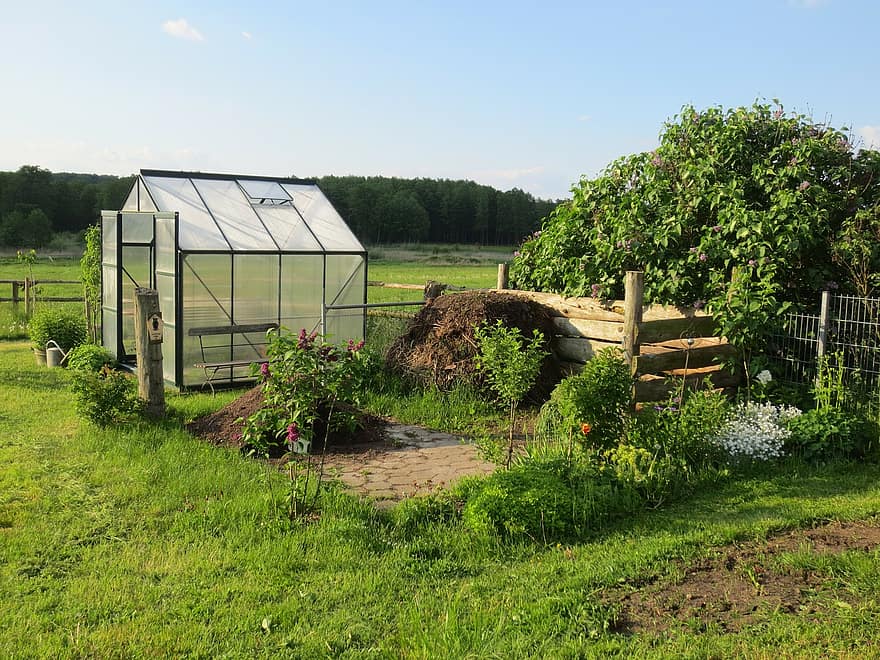If creating a large greenhouse for you is too exhausting, then start by a mini greenhouse; the steps on how to use a mini greenhouse are easy. But, if you’re worried about how to use a mini greenhouse, we have prepared some guides for you to start your one.
A mini greenhouse keeps up warm temperatures in the soil and air; which helps in seed germination. Most mini greenhouses have a plastic tray that holds soil or pots and clear plastic covering that permits in light.
These greenhouses are typically utilized inside, even though you can likewise set them outside during radiant climate if the temperature is above freezing. The clear covering keeps on permitting the light in after the seeds sprout, making a greenhouse situation during the early plant development period.
Contents
Steps In Using A Mini Greenhouse
Although a mini greenhouse is just easy to handle, you must still be aware of using it. There are various ways how to use a mini garden.
Be guided with the steps on how to use a mini greenhouse below:
#1 Choose a planting tray and fill with potting mix
Fill the greenhouse planting tray or seedling pots, contingent upon the plan of the greenhouse, with a sterile potting mix. Fill the water tray with 1 inch of lukewarm water and set the soil tray or pots inside.
Permit the soil to ingest the dampness for 30 minutes or until the soil surface gets soggy, at that point void the abundance water from the trickle tray.
#2 Sow the seedlings
Sow the plant seeds in the readied soil blend at the profundity indicated on the seed bundle, which is generally a profundity double the width of the seed. Plant two seeds for each pot or planting cell, or sow the seeds 1 inch separated in columns set 1 inch apart in tray and pads. Fog the soil surface with water to soak it after planting, if vital.
#3 Find a suitable location
Set the greenhouse cover above the tray. Spot the greenhouse in an area that gets brilliant, roundabout daylight where temperatures are somewhere in the range of 65 and 75 degrees Fahrenheit. The cover holds dampness in the soil so it needn’t bother with watering until after germination.
#4 Open the cover
Prop open the greenhouse cover after the seeds start to grow to permit buildup to disseminate. Utilize a little stick or pencil to hold one finish of the concealment.
#5 Water the seedlings
Water the seedlings when the soil surface dries. Empty water into the trickle tray so the soil will absorb the dampness from the base and the seedling leaves don’t get wet; which can prompt parasitic illness. Eliminate the greenhouse cover before the seedlings develop sufficiently tall to contact the plastic.
Seed Starting
In this section, we will teach the ways of planting your seedlings. Seed starting is important for you to identify how will you going to grow your plant seeds in a mini greenhouse. Here are the ways:
#1 Discover your container
The atmospheric conditions are nippy and wet in pre-spring, with a possibility of a day off. Given this, pick enormous wooden compartments like raised beds or wine barrel growers for your initial seeds.
The dampness can travel through the wood and the enormous size of the holder implies the soil will remain hotter for the seedlings.
#2 Prepare the soil
The old soil from your containers can be used as soil by mixing from bottom to top. Dive in a layer of fertilizer six crawls beneath the outside of the soil to set up some future nourishment for the seedlings as they grow up.
At long last, cover the top layer of soil with a light, dampness holding material like cultivating blend, peat greenery, or coconut coir.
The little seeds will have the dampness they have to sprout, and the soil won’t build up an outside layer excessively difficult for the seedlings to rise out of.
#3 Plant your seeds
During some season, germination rates will, in general, be lower, so plant thickly. Regularly, utilize an entire parcel of seeds per wine barrel.
Developing time is much slower during not spring season and diminishing is fun—infant tray of mixed greens are the primary vegetables you can get the chance to eat from your greenhouse so plant many.
#4 Venting and watering
Dealing with the wellbeing of plants under mini greenhouses will be particularly up to you as a greenhouse worker to choose what is required. Downpour won’t water your plants for you, so it is currently dependent upon you to choose when to water.
If it is getting excessively wet or hot inside, you can lift the greenhouse from the ground slightly or realize that it’s an ideal opportunity to eliminate the greenhouse for good.
#4 Solidifying off
At the point when the seedlings have their first obvious leaves, and the climate is beginning to heat up, you’ll begin in solidifying off your seedlings by eliminating the cover for a couple of hours every day, expanding the time gradually until they have an entire day in the external air revealed.
#5 Diminishing and harvesting
This is the most compensating part: begin cutting and eating the plants by clipping seedlings at the base with sharp scissors to prepare for different plants to become greater. Child lettuce, radishlings, and pea shoots are awesome in the spring.
It’s A Wrap
This article ends here! So, we hope that you have digested the steps and guides that we imparted to you. If it’s clear to you now on how to use a mini greenhouse, then you can start now with confidence. Thank you, and have a great day.
